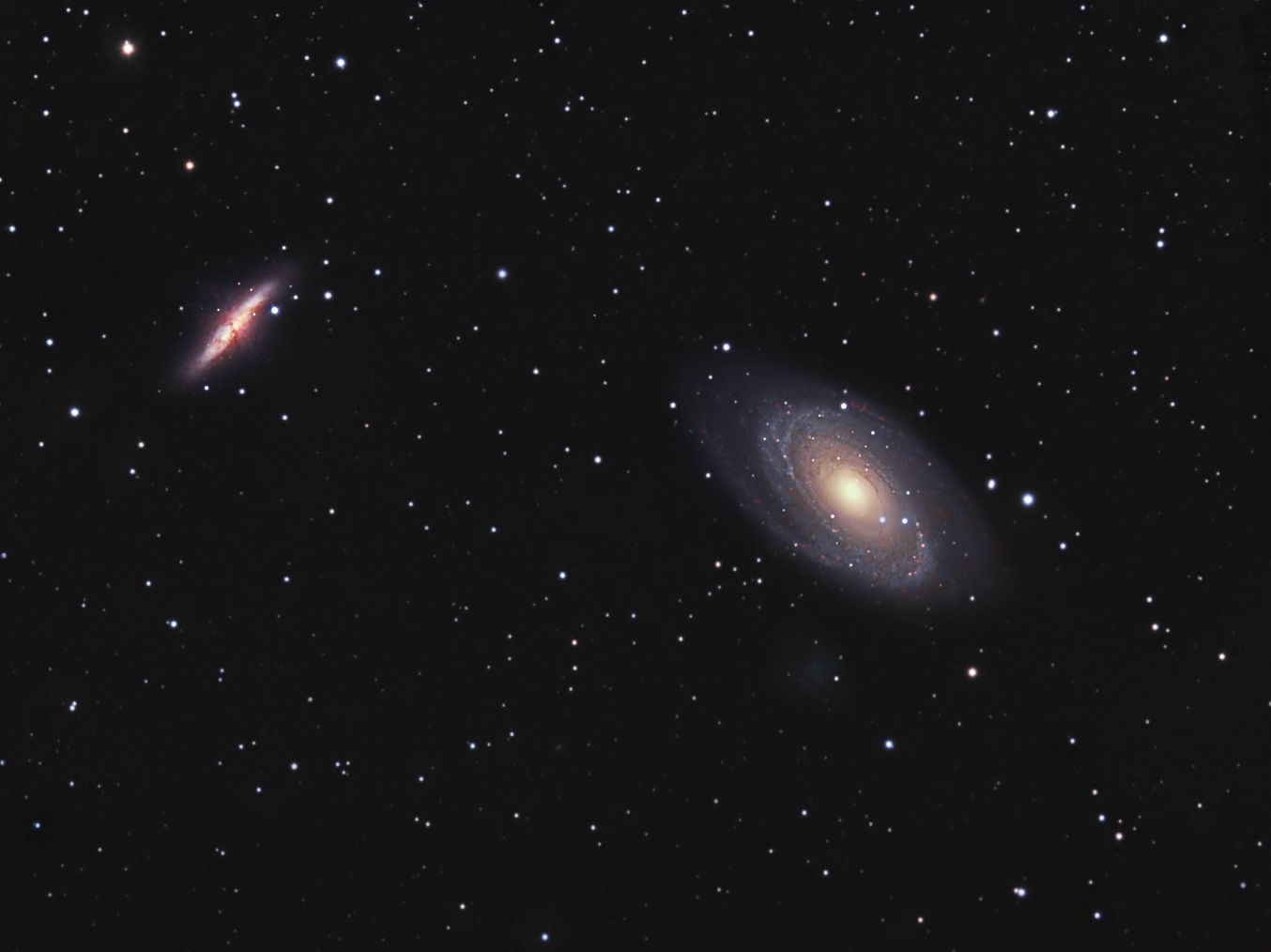Time Travel Research Center © 2005 Cetin BAL - GSM: + 90 05366063183 - Turkey / Denizli
M81 (Bode's Galaxy) and M82 (Cigar Galaxy)


|
Characteristics: Magnitude: 6.9 Size: about 21' x 10' Distance: 12 million light years RA: 9h 55m 58s Dec: 69 degrees 02' 43" Description: M81 (the larger galaxy on the right) is a grand-design spiral galaxy that was discovered by Johann Bode in 1774. Due to its relatively large size and high surface brightness, it is an easy target for visual observation through small aperture telescopes. M81 forms a galactic pair with M82 (on the left), located only 150,000 light years apart, and the two galaxies have influenced each other through a close encounter occurring tens of millions of years ago. Closer examination of this image reveals a larger companion galaxy just to the bottom of M81, referred to as Holmberg IX. More information about M81 may be found here. M82 (the smaller galaxy on the left) is a companion to M81 and was also discovered by Johann Bode in 1774. It has an odd, oblong shape that is thought to have arisen from gravitational interaction with M81 millions of years ago. High resolution color images of M82 show dramatic tendrils of red gas shooting from the center of the galaxy. Photographic Details: Date: December 7 and 11, 2004 (for M81 and M82 luminance, respectively). January 10, 2005 (widefield luminance, RGB, and Ha data).
|